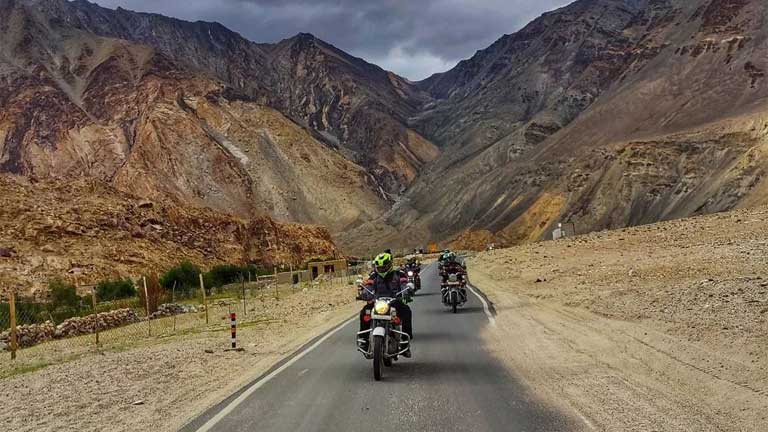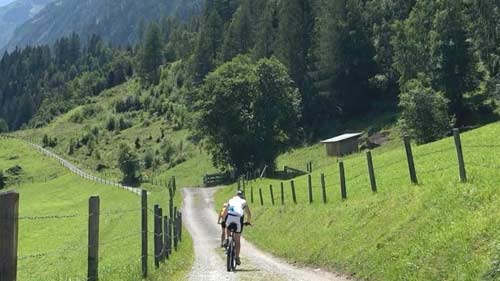
Ladakh’s beauty and serenity can only be described by eyes, not by words. Ladakh’s scenic bliss cannot be adequately captured in pictures and videos. There is something special about this place in that it caters to every kind of audience.
From satisfying the thirst of motorcycle enthusiasts to offering spirituality to those seeking peace, Ladakh has something for everyone. The ‘land of high passes’ is 8,370 feet above sea level, giving the Himalayan range a beautiful blend of green and white. It is easy to see the ruggedness of the Himalayas from the white sand dunes. Lakes, however, offer a much more serene atmosphere. You are guaranteed to find pristine beauty in Leh Ladakh. Leh Ladakh is most beautiful during the summer.
April and May are the best months to visit Ladakh because most of the tourist attractions will be open. In order to avoid excessive crowds during the summer months, many travellers choose June to August. Ladakh experiences long winters due to its high altitude. Check out some of the interesting places to visit during the Ladakh trip below.
Magnetic Hill
In the vicinity of Leh city, along the Leh-Kargil Highway, is a small stretch of road defying gravity. The magnetic hill attracts stationary vehicles upward. It is one of the most popular tourist attractions in Ladakh and a convenient pit-stop for tired travellers passing through the valley.
Visit the Ladakh Magnetic Hill between July and September for the best experience. At this time of year, the roads are clear and the weather is just right for exploring Ladakh and its beauty.
Pangong Lake
There is never a dull moment in Ladakh, as nature is always ready to surprise you. At almost 4,350 meters high, Pangong Lake is the highest saltwater lake in the world. The blue water of the lake stands out starkly in contrast to the arid mountains that surround it.
Pangong Lake extends almost 160km across two countries, India and China, with one third located in each country. Known as the “high grassland lake” of Leh Ladakh, Pangong Lake is one of the most famous lakes in the region. The beauty of this place can keep you occupied for hours, and you’d still not be able to take it all in. At different times, Pangong Lake appears blue, green, or red depending on the weather.
Hall of Fame Ladakh
The Indian Army constructed the Hall of Fame as a tribute to the brave soldiers who sacrificed their lives in defense of the motherland during the Indo-Pak wars. About 4km from the city of Leh, the Hall of Fame museum can be found on the Leh-Kargil Road.
This monument reminds us of the great sacrifices made by our soldiers to protect our country. It is open between 9 A.M. and 1 P.M. and from 2 P.M. to 7 P.M. An entry ticket costs Rs. 25 per person. There is an additional fee of Rs. 50 for photography inside the museum.
Thiksey Monastery
Tiksay Monastery lies 19 kilometers from Leh, the capital of Ladakh. Indus Valley and Stok range are visible from the property, which is situated on a hillock overlooking the valley. The monastic complex at Thiksay in Tibet was founded by Spon Palden Sherab and his master Jangsem Sherab Zang, one of the six contemporary disciples of Lord Tsongkhapa, founder of the Gelugpa school of Tibetan Buddhism.
His work was critical to the dissemination of his teachings into the remote provinces. Tsongkhapa once prophesied that his doctrine would flourish on the right bank of the Indus River. In response to this prophecy, the Gelugpa order established Thiksay, followed by many other large monasteries, including Spituk and Likir monasteries, all located on the right bank of the Indus River. Lhakhang Serpo (Yellow Temple) was originally built by Jangsem Sherab Zangpo prior to the construction of Thiksay Monastery.
Zanskar Valley
Zanskar Valley is nestled in the northern flanks of the Great Himalayas and sits comfortably at a height of 13154 ft. above sea level. The region’s natural beauty, snow-capped mountains surrounding it, and scenic landscape make Zanskar a major tourist attraction.
There are a variety of adventure activities in this region, including water rafting, trekking, and paragliding. This place is also filled with centuries-old monasteries, making it a favourite spot for lovers of monasteries. Zanskar’s winter temperatures can drop to -30 degrees Celsius, so travellers should book their Zanskar trip between June and September to avoid heavy snowfall in the valley.



